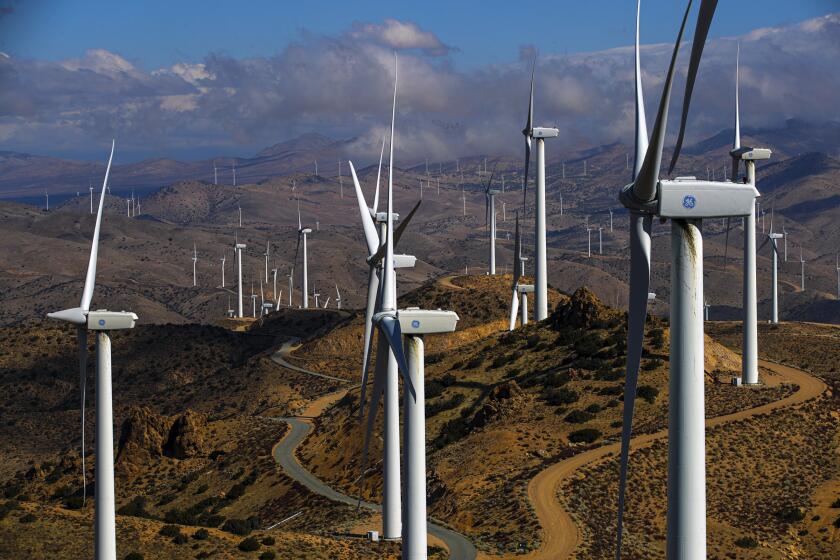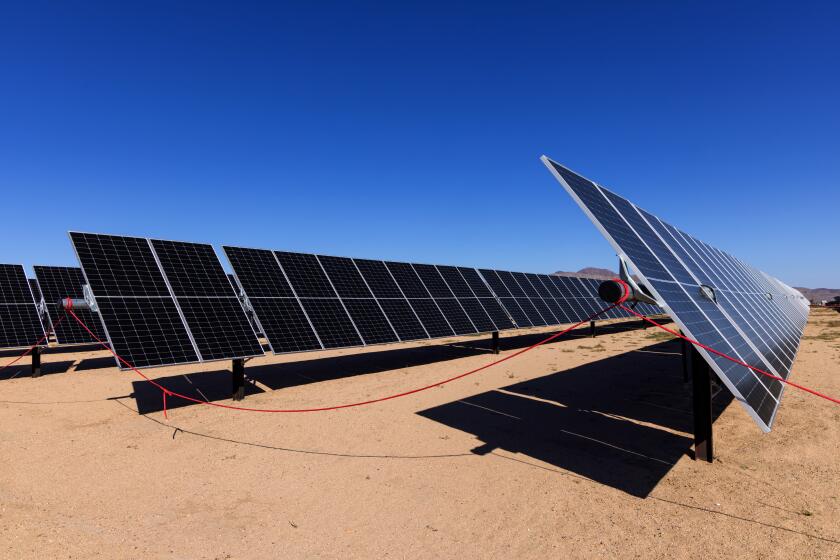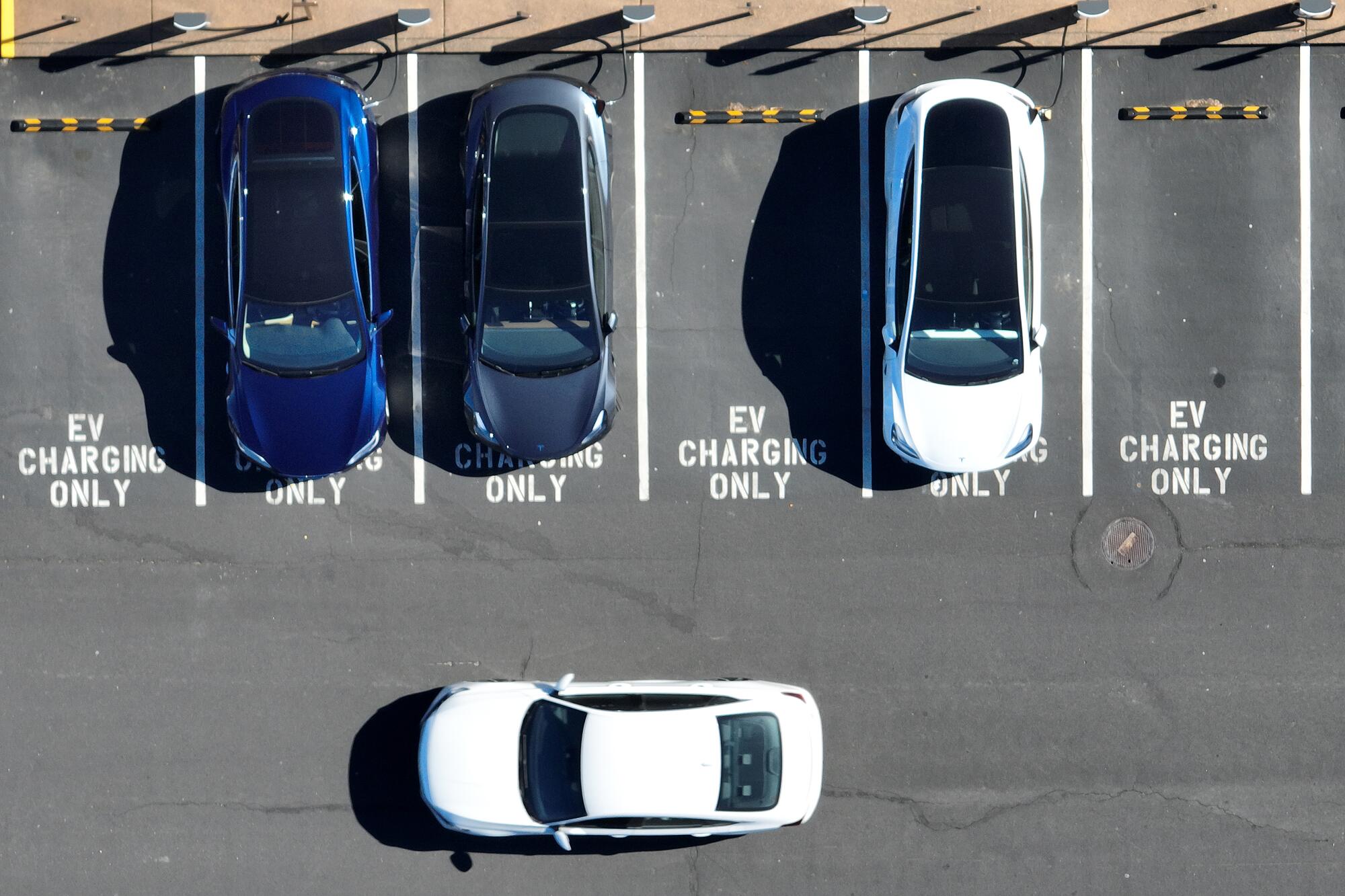
- Share via
World leaders are gearing up for COP28, an annual U.N. climate conference that will begin this week in Dubai, and California is expected to play a sizable role in the proceedings.
Representatives from Gov. Gavin Newsom’s administration will attend and speak on the Golden State’s progress toward clean energy goals, zero-emission vehicles and nature-based solutions, officials said. California will also engage in continued diplomacy at the subnational level after Newsom’s recent trip to China, where he engaged in climate talks with local leaders.
“Part of our presence in California is really to make the case that subnational governments — that is, states, provinces, cities — need to have a central role in this international collaboration to combat climate change,” Wade Crowfoot, California’s natural resources secretary, told reporters Tuesday.
Aggressive and impactful reporting on climate change, the environment, health and science.
But some experts have soured slightly on the conference this year, noting that Dubai is one of the world’s leading oil producers and plays an outsize role in global fossil fuel emissions, the main driver of global warming. The conference is being chaired by Sultan Ahmed Al Jaber, chief executive of Abu Dhabi National Oil Co., one of the largest oil companies in the world.
In a year expected to be the hottest ever recorded due to climate change, holding the conference in the Dubai sends mixed signals, said Cara Horowitz, executive director of the Emmett Institute on Climate Change and the Environment at UCLA, who will be attending the proceedings.
“This conference will be an especially challenging one for making real progress,” Horowitz said, not only because of Al Jaber’s role but also because this year’s agenda offers few opportunities for new breakthrough agreements such as the Paris climate agreement, which was established eight years ago at COP21.
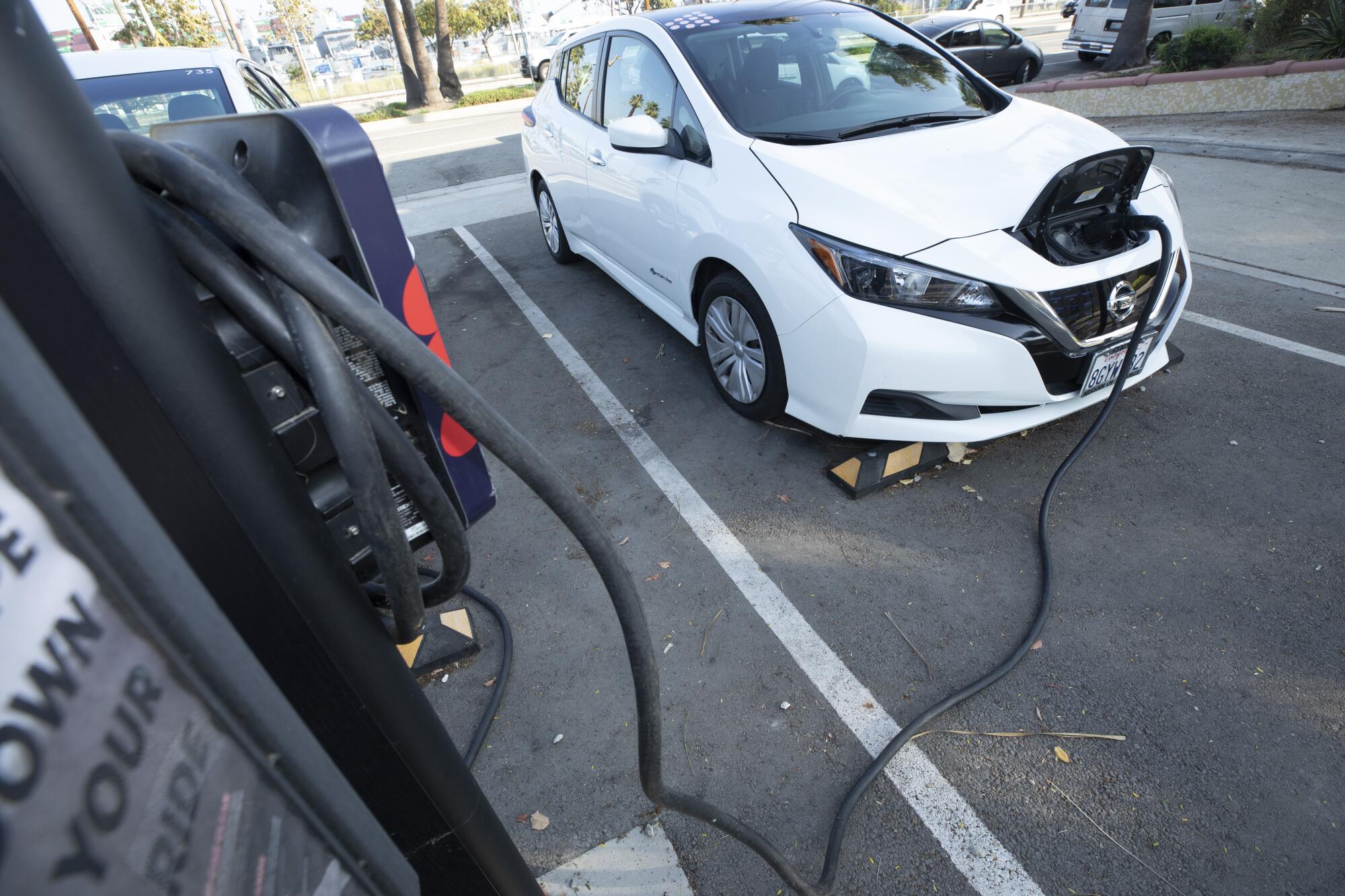
The Paris agreement seeks to limit global warming to 1.5 degrees Celsius above preindustrial levels and no higher than 2 degrees — a benchmark that was passed for the first time this month.
“I doubt that this COP is going to radically change our approach to solving the problem, but hopefully it will add to incremental progress that allows us to see a way forward,” Horowitz said. “That’s deeply unsatisfying to me and to many others, but it’s a little hard to figure out how else one would go about tackling a problem of this size other than by bringing together the world’s leading experts, and the world’s most passionate advocates and policymakers, to create a space for change.”
Two degrees Celsius — or 3.6 degrees Fahrenheit — is the internationally agreed upon upper limit of warming established by the 2015 Paris climate agreement.
Indeed, California officials were emphatic that the state can get work done in Dubai. As one of the world’s largest economies, California is already a global leader in climate policy and has made great strides toward decarbonization, with the current goal of reaching carbon neutrality by 2045.
The state has also committed to transitioning to electric vehicles with a ban on new gas car sales slated to take effect in 2035. Currently, 27% of new vehicle sales in the state are zero-emission vehicles, up from 5% when Newsom took office.
But more collaboration will be needed to reach greater goals, said Lauren Sanchez, Newsom’s senior climate advisor.
“We could be net-zero tomorrow ... but we would still need action from the world’s largest emitters, large countries and other nation states, in order to actually bend the curve of carbon emissions and keep Californians safe,” Sanchez said. “A big part of the diplomacy that we’ll be engaging in, as a subnational, is to share everything California has been working on and to continue learning from others.”
Among the work California will be touting is its substantial investments in renewable energy. About 60% of the state’s power now comes from clean energy sources, said David Hochschild, chair of the California Energy Commission. That includes a 2,000% increase in solar power over the last decade and a 3,500% increase in energy storage over the last four years, making California the largest and fastest-growing energy storage market in the world, he said.
At COP28, the state plans to join the Global Offshore Wind Alliance, an international consortium that seeks to achieve 2,000 gigawatts of offshore wind power by 2050, with 25 gigawatts coming from California, Hochschild said.
But energy is just one of California’s offerings at COP28, formally called the 28th Conference of the Parties to the U.N. Framework Convention on Climate Change. The state is planning presentations on its healthy soils program and on nature-based climate solutions, including habitat restoration work and the “30 by 30” plan to conserve 30% of the state’s lands and coastal waters by 2030. For the first time, California will also send its tribal affairs secretary, Christina Snider-Ashtari, to the conference.
“This is actually the first point in history where globally, national and subnational governments have recognized the importance of Indigenous voices in this space, understanding too that Indigenous peoples are disproportionately impacted by the impacts of climate change,” Snider-Ashtari said.
The California Air Resources Board has released its long-awaited scoping plan, a roadmap for the state to drastically cut its carbon emissions.
Horowitz, of UCLA, said other states and nations are listening and following California’s lead. She said she has been pleased by the state’s presence and authority at COP gatherings in the past.
“California’s influence in global climate policymaking is real,” Horowitz said. “California continued to grow its economy as it shrank its greenhouse gas emissions, and in doing so, it serves as a model for the world that this is possible.”
But the state also has lessons to learn at COP28 and will be launching an international climate partnership focused on reducing methane emissions. Methane is a short-lived greenhouse gas that lasts about a dozen years in the atmosphere but traps 80 times more heat than carbon dioxide.
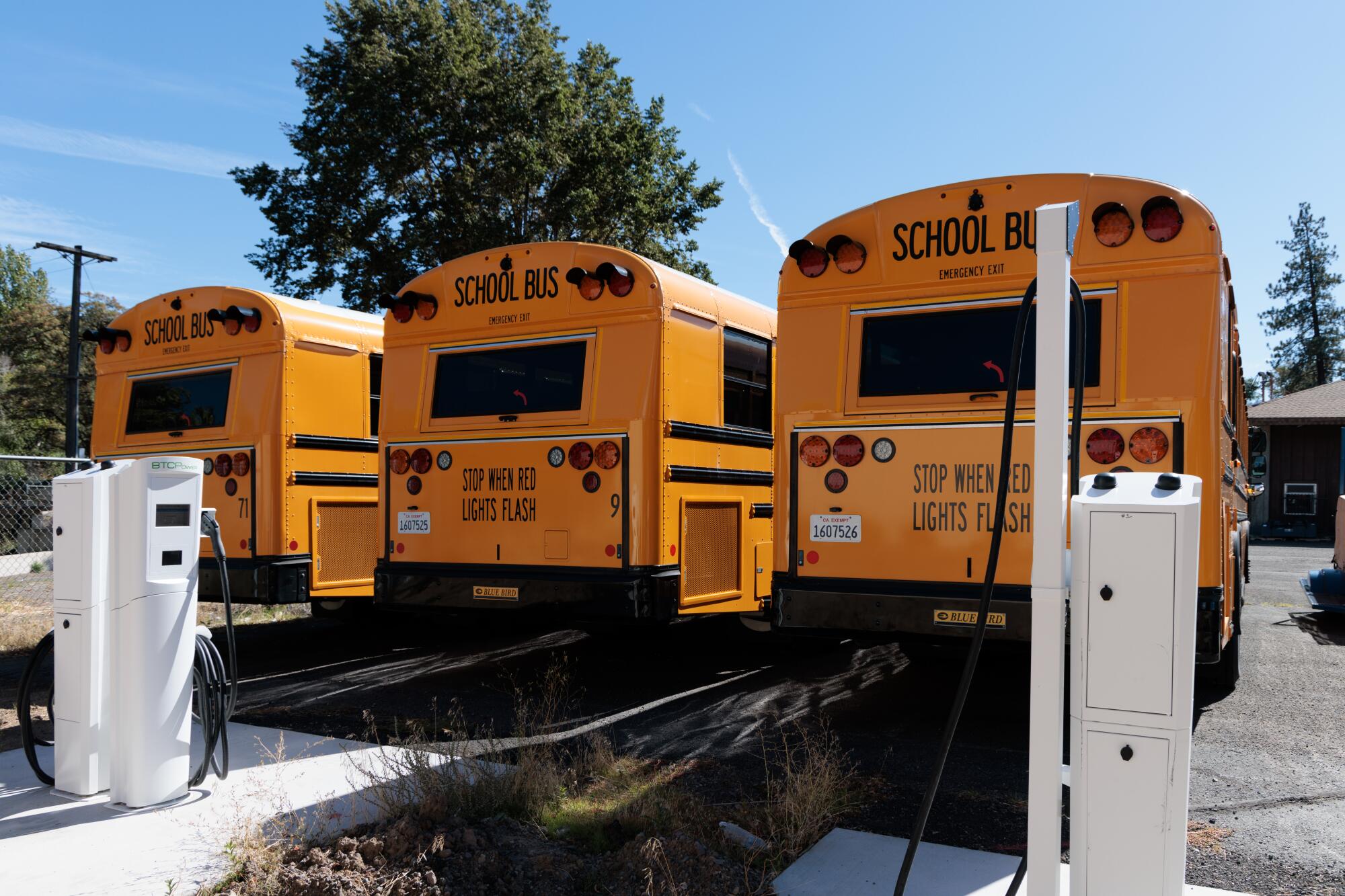
“We will be significantly expanding our collaborations in this space and really sharing information and strategies and understanding how data can help us tackle the problem of methane,” said Liane Randolph, chair of the California Air Resources Board.
The state will also launch an international climate partnership among subnational jurisdictions with similar Mediterranean climates and will participate in a local climate action summit.
“We’ll be lifting up what we’re doing in California on wildfires, drought, floods, extreme heat, sea level rise, but also developing and announcing collaborations with other governments across the world that are working on these issues as well,” Crowfoot said.
We need as much renewable energy as we can get, as fast as we can get it. Even if that’s painful.
He added that he is looking forward to the results of a “global stocktake” that will occur in Dubai — an inventory of climate progress that he and other officials hoped will prompt countries to update their climate targets to be more ambitious.
But even as California looks to serve as an international climate model, the state is also grappling with its role as an oil producer and consumer. Sanchez said the state will attend COP28 “with a lot of humility” as it works to transform how it produces and consumes energy.
The United States too is not without reproach, as it continues to produce and consume more oil than any other nation. Just weeks ago, the Biden administration released the country’s Fifth National Climate Assessment, a sobering report that showed the nation and the world are far from meeting climate goals.
President Biden’s landmark climate bill, the Inflation Reduction Act, received considerable acclaim for its environmental plans and targets. But while international figures such as Pope Francis and King Charles III are slated to attend the conference in Dubai, Biden has opted to skip this year’s proceedings and send U.S. climate envoy John Kerry and other officials in his place.
Despite the controversies surrounding this year’s COP, Horowitz said she is optimistic that the state and the nation can draw value from the event.
“Often it’s states and cities and counties who are making nitty-gritty decisions about how to run their transit, and what to do with their waste, and what electricity supplies to purchase,” she said. “And it’s those kinds of decisions that really make a huge difference when aggregated globally, and that’s why cooperative efforts among local jurisdictions really matter.”
In many cases, she added, it is the side conversation among states and provinces — as opposed to the high-level negotiations among countries — “where the real work of achieving climate emission reductions happens.”


